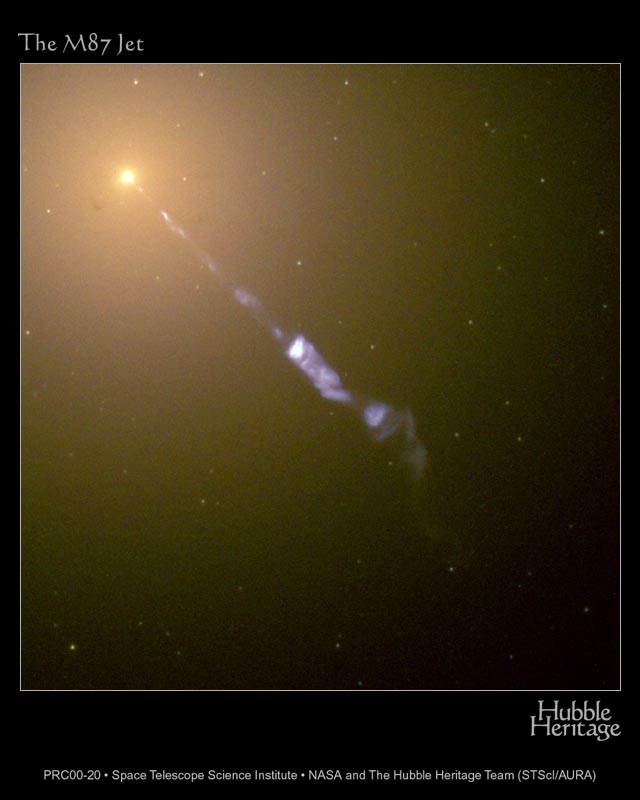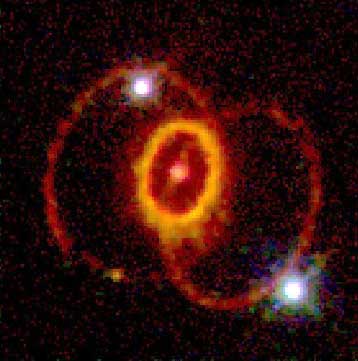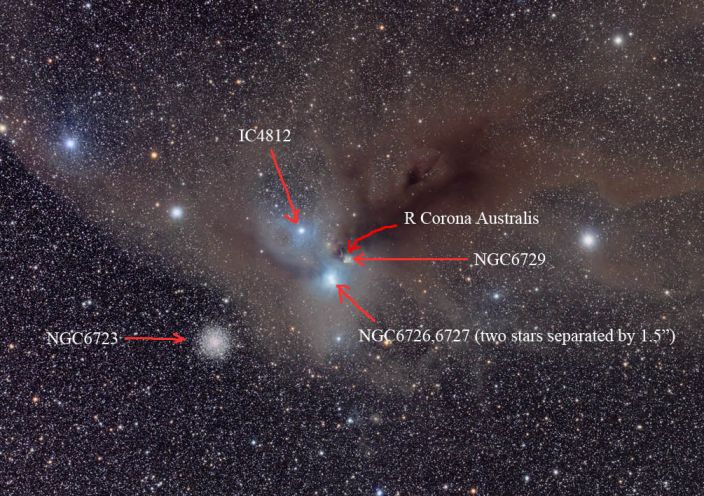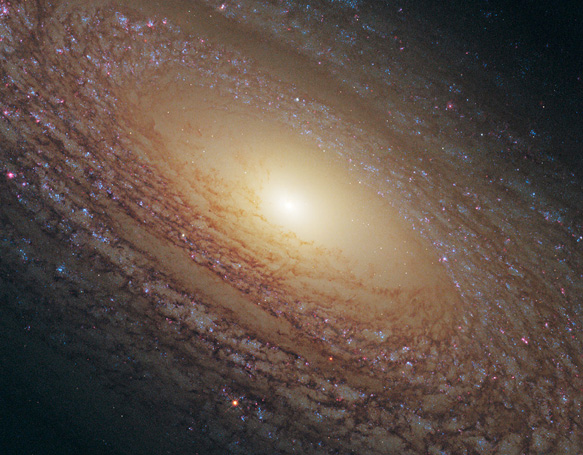Re: APOD: Spiral Galaxy NGC 2841 Close Up (2011 Feb 19)
Posted: Mon Mar 21, 2011 4:40 am
Thanks for your kind words, Doug!
You asked:
This is an interesting youtube video about the orbits of some stars around the central black hole of our own galaxy:
It is hard if not impossible to measure how stars orbit the black holes of galaxies that are millions of light-years away, which is the case of all large elliptical galaxies. Another problem with elliptical galaxies is that they lack the brightest kinds of stars, stars which are found in our own galaxy: the millions of B stars, the thousands of O stars and the few exceptional Luminous Blue Variables (LBVs) and the yellow and red hypergiants. I believe that several of the stars that were observed as they orbited the black hole of our own galaxy are B-type stars. Elliptical galaxies don't have these stars.
No, but elliptical galaxies do have red giant stars, which can become quite bright. They can reach a maximum brightness, which I believe is at least a thousand times the brightness of the Sun. This maximum brightness is called the tip of the red giant branch. Wikipedia writes:
http://hubblesite.org/newscenter/archiv ... l/1994/23/
Hubble spotted a gas cloud rapidly orbiting the black hole, rather than individual stars orbiting it (though my guess is that there must be many stars orbiting close to the black hole, too).
As the gas cloud orbits the black hole of M87, the black hole keeps swallowing some of the gas. As gas falls into the hole, some gas is rapidly blasted away in the opposite direction, forming a strong jet:
There is actually a jet in the opposite direction too, except that it is only visible as a radio jet:
You can see that one of the jets is strongly bent, but there are clearly two of them.
Other elliptical galaxies also show evidence of having piled-up mass rotating around their centers, and the rotation can be measured and the mass of the black hole can be inferred.
Doug, you asked me:
Ann
You asked:
The best way to prove the existence of a black hole in the center of any galaxy is to measure the orbits of the innermost stars orbiting the black hole. If they orbit fast enough, and if their orbits are small enough, then Kepler's law about orbits tells us that a huge amount of matter is contained within a very small space inside that orbit. And if so much matter is contained within such a small orbit, then this matter has to collapse into a black hole, according to what astronomers believe they know about the extent to which matter can be compressed without collapsing.Do astronomers have actual evidence of black holes inside elliptical galaxies ?
This is an interesting youtube video about the orbits of some stars around the central black hole of our own galaxy:
Click to play embedded YouTube video.
No, but elliptical galaxies do have red giant stars, which can become quite bright. They can reach a maximum brightness, which I believe is at least a thousand times the brightness of the Sun. This maximum brightness is called the tip of the red giant branch. Wikipedia writes:
Hubble is sharp-eyed enough to spot the brightest red giants in a supergiant elliptical galaxy like M87, which according to Hubblesite is located about 50 million light-years away. So Hubble could theoretically follow the innermost red giants of M87 as they orbit the central black hole of that galaxy. And it is quite possible that Hubble has made at least a preliminary study of the innermost stars in M87. But Hubble is most famous for having spotted a chaotic gas cloud orbiting the central black hole of M87:Tip of the red giant branch (TRGB) is a primary distance indicator used in astronomy. It uses the luminosity of the brightest red giant branch stars in a galaxy to gauge the distance to that galaxy. It has been used in conjunction with observations from the Hubble Space Telescope to determine the relative motions of the Local Cluster of galaxies within the Local Supercluster.
http://hubblesite.org/newscenter/archiv ... l/1994/23/
Hubble spotted a gas cloud rapidly orbiting the black hole, rather than individual stars orbiting it (though my guess is that there must be many stars orbiting close to the black hole, too).
As the gas cloud orbits the black hole of M87, the black hole keeps swallowing some of the gas. As gas falls into the hole, some gas is rapidly blasted away in the opposite direction, forming a strong jet:
There is actually a jet in the opposite direction too, except that it is only visible as a radio jet:
You can see that one of the jets is strongly bent, but there are clearly two of them.
Other elliptical galaxies also show evidence of having piled-up mass rotating around their centers, and the rotation can be measured and the mass of the black hole can be inferred.
Doug, you asked me:
I have no idea how I did it. I just did. I use the web reader Opera, and sometimes it seems able to do things that Explorer is unable to. On the other hand, the opposite is often true, too.How did you access images at cosmo.nyu.edu website ?
Ann



















